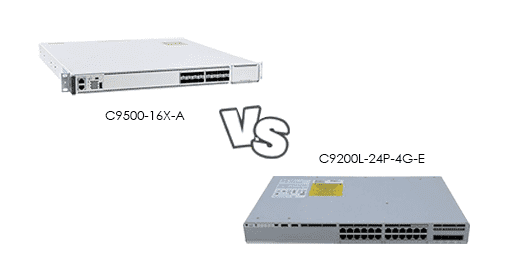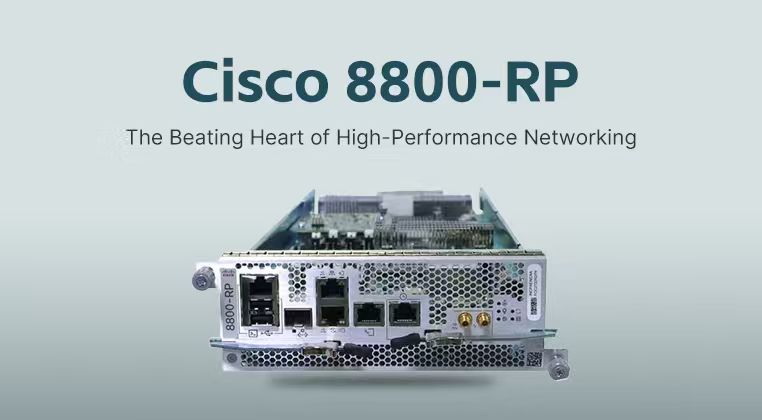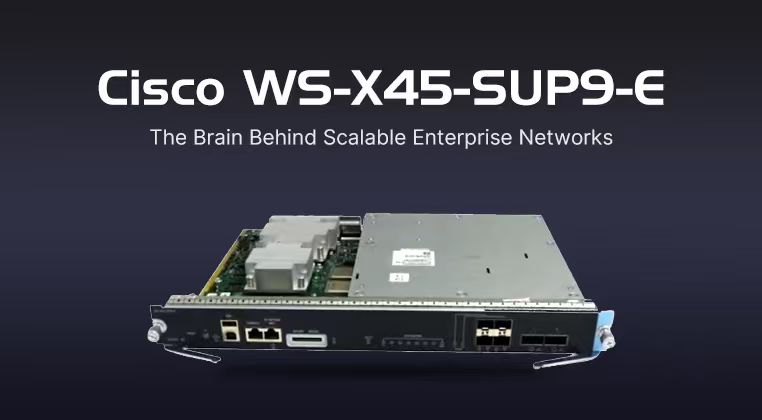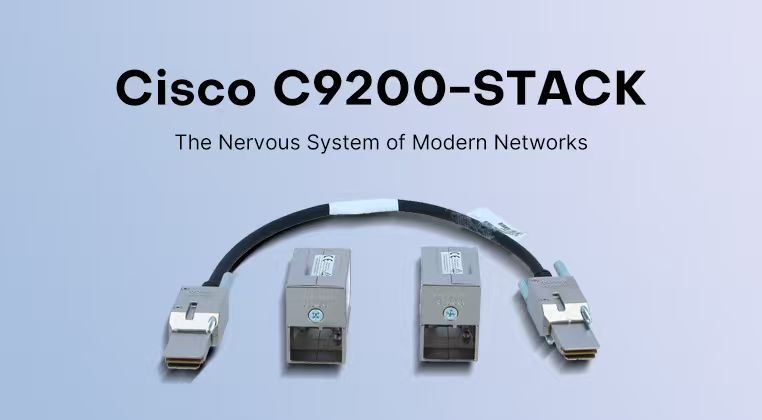















Hey there, network professionals and tech enthusiasts! Ever found yourself scratching your head trying to figure out which Cisco switch truly deserves a spot in your network infrastructure? You're not alone. Today we're putting two popular Catalyst series switches side by side - the C9500-16X-A and C9200L-24P-4G-E to see how they stack up in real-world scenarios.
I've watched countless organizations struggle with this exact decision, and honestly, both switches bring something valuable to the table. But here's the catch - they're designed for completely different roles in your network ecosystem. The C9500 series typically serves as the robust core of your operations, while the C9200L fits perfectly as that reliable workhorse at the access layer
Let's dive right into what makes these switches tick, beyond just the spec sheets and marketing fluff.
When you're planning your network infrastructure, these raw numbers really tell the story of what each switch can handle. I've seen too many projects where people gloss over these fundamentals only to regret it later.
Here is a comparison of their core specifications:
| Specification | C9500-16X-A | C9200L-24P-4G-E |
|---|---|---|
| Backplane Bandwidth | 480 Gbps | 80 Gbps |
| Packet Forwarding Rate | 720 Mpps | 41.66 Mpps |
| Switching Capacity | Up to 960 Gbps | 56 Gbps |
| Stacking Capacity | Information missing | 136 Gbps |
| MAC Address Capacity | Up to 64,000 | Information missing |
| VLAN Support | 4,094 VLAN IDs | 1,024 VLAN IDs |
| QoS ACL Scale | Up to 18,000 entries | 1,000 entries |
Just looking at those numbers, it's pretty clear we're dealing with two different classes of equipment. The C9500 isn't just slightly more powerful - it's in another league altogether when we're talking about handling massive traffic loads and complex network policies.
I remember working with a client who initially thought the C9200L would suffice for their growing operations, but once they saw their projected growth trajectory, the raw capabilities of the C9500 made much more sense for their core switching needs.
Now let's talk about what these switches feel like when you actually get your hands on them. The physical differences might seem trivial until you're trying to fit them into a packed server rack.
The C9200L-24P-4G-E comes in at a relatively lightweight 4.53kg with dimensions of 440x445x288mm . It's that standard 1RU form factor that slides neatly into most racks without much fuss. What really makes this model stand out for many deployments is its 24 full PoE+ ports - perfect for those offices packed with VoIP phones, wireless access points, and security cameras that need both data and power through a single cable.
On the other hand, the C9500-16X-A tips the scales at a more substantial 10.78kg , measuring 1.73x17.5x21.52 inches . This extra heft isn't just for show - it reflects the more robust internal architecture and components designed for continuous heavy lifting.
Spec sheets are one thing, but it's the actual features that determine how these switches perform day in and day out. Having seen both in action across different environments, I can tell you that their personalities couldn't be more different.
The C9200L-24P-4G-E shines with its straightforward approach to access layer switching. With support for static routing, RIP, and OSPF protocols , it handles inter-VLAN routing and basic network segmentation like a champ. The PoE+ capability with 370W power budget means you can connect and power a small army of IP phones, cameras, and access points without additional power injectors cluttering your space. I've particularly appreciated its stacking capability that lets you manage multiple units as one logical device - a real time-saver for distributed deployments.
Cisco has packed their DNA software into the C9200L series , giving you those advanced security features like MACsec encryption and dynamic ARP detection without breaking a sweat. For most small to medium businesses, this represents the sweet spot between capability and complexity.
But then there's the C9500-16X-A - what I like to call the "no-compromises" option. We're looking at support for up to 64,000 MAC addresses and 4,094 VLANs - numbers that clearly announce this switch means business in large, complex environments. Its IPv4 multicast routing capacity of 32,000 routes and QoS ACL scale of up to 18,000 entries means you can implement granular traffic policies without constantly worrying about hitting limits.
What really sets the C9500 apart in my experience is its consistency under pressure. While the C9200L handles typical access layer workloads competently, the C9500 maintains its performance even when you throw massive amounts of inter-VLAN traffic or complex routing policies its way.
Let's get real for a moment - no one buys switches based solely on spec sheets. It's the daily interaction that determines whether you'll love or regret your choice.
The C9200L series has garnered positive feedback for its transmission speed, stability, and ease of operation . Many users find it straightforward to set up and manage, with one user noting that it works right out of the box - you can just "plug and play" . This simplicity is a huge advantage for smaller IT teams wearing multiple hats. The learning curve isn't particularly steep, especially if you're already familiar with Cisco's iOS.
The C9500 operates at a different level altogether. We're talking core infrastructure here - the beating heart of your network. While it might not get the same "easy to use" comments (because let's face it, core switches are inherently more complex), it earns respect for its rock-solid reliability with an MTBF of 315,790 hours . That's over 36 years of continuous operation in theory! In practice, I've seen these switches handle years of continuous operation without as much as a hiccup.
Alright, let's talk about everyone's favorite topic - money. While I can't give you exact prices (they vary too much by region and vendor), I can walk you through the value proposition of each.
The C9200L-24P-4G-E sits comfortably in the mid-range segment, offering excellent value for organizations that need reliable PoE-enabled access switching without breaking the bank. When you consider that it combines data switching and power delivery in a single unit, the cost savings in installation and infrastructure can be significant. It's the kind of switch you buy when you need to connect an office floor full of devices and want to keep things simple and cost-effective.
The C9500-16X-A represents a more substantial investment, and rightfully so. You're not just paying for a switch - you're investing in the foundation of your network for years to come. The scalability, advanced features, and raw performance come at a premium, but for organizations where network downtime means losing thousands of dollars per minute, this investment quickly justifies itself.
So after all this, which switch should you choose? Well, as with most things in networking - it depends.
Go with the C9200L-24P-4G-E if you're:
Deploying at the access layer in an office or campus environment
Needing to power multiple PoE devices like phones, cameras, and access points
Working with a typical small to medium business budget
Looking for that sweet spot between performance and affordability
Needing a reliable switch that's relatively straightforward to manage
Spring for the C9500-16X-A when you're:
Building or upgrading your network core
Handling massive amounts of inter-VLAN traffic
Needing advanced routing capabilities and granular policy enforcement
Operating at a scale where 64,000 MAC addresses seems reasonable
Where network reliability is non-negotiable
At the end of the day, both are excellent switches - they just serve different masters. The C9200L is that reliable team player that gets the job done without fuss, while the C9500 is the power center that keeps everything running smoothly behind the scenes.
Whichever path you choose, you're getting Cisco's quality and reliability - now it's just about matching the tool to the task at hand. Happy networking!




